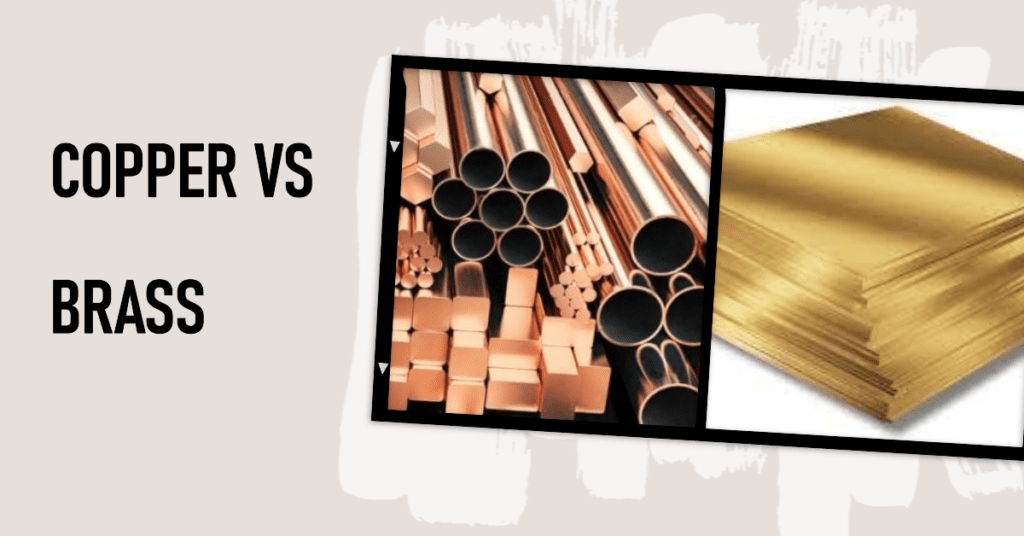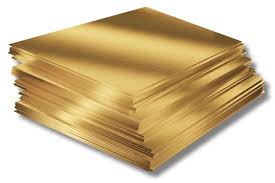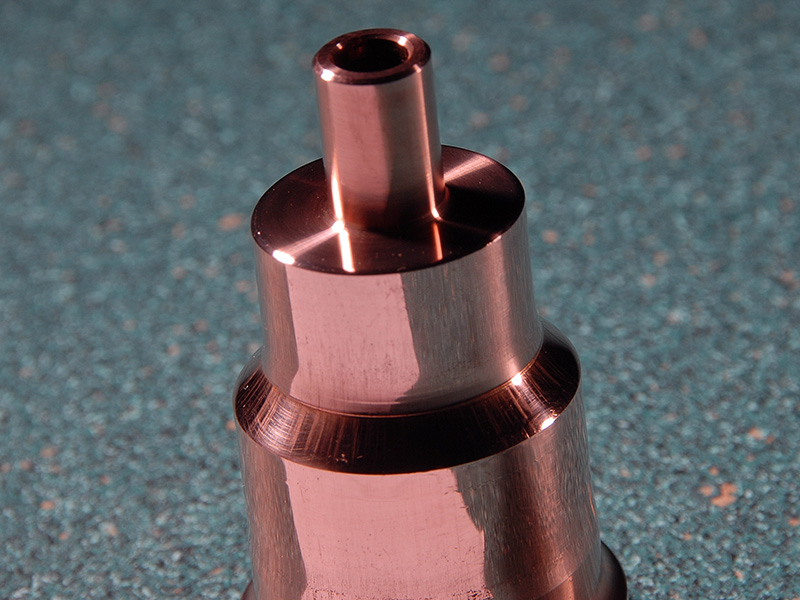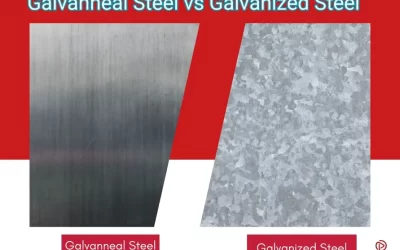
Copper and brass, two non-ferrous metals, have captured human fascination for centuries. Renowned for their utility, aesthetics, and diverse applications, they continue to permeate our everyday lives in numerous forms. This detailed guide will unveil the unique aspects and differences between copper and brass, from their properties and applications to the manufacturing processes and environmental implications. The intention is to provide a comprehensive understanding that will guide informed decisions in using these metals, whether in construction, electrical applications, musical instruments, or aesthetic endeavors.
This journey into the world of copper and brass promises to enlighten both the novice and the seasoned user, offering fresh insights into these seemingly familiar yet intriguing materials.
A Deep Dive into Copper: The Age-Old Metal

Copper in different forms
As one of the first metals to be discovered, copper holds a special place in human history. Let’s embark on a journey into the world of copper, covering its history, properties, uses, and the process involved in its manufacture.
Copper, denoted by the symbol ‘Cu’ on the periodic table, is a ductile metal known for its high thermal and electrical conductivity. It occurs naturally in a directly usable metallic form, leading to its discovery in the prehistoric period.
Table 1: Key Milestones in the History of Copper Usage
| Period | Usage |
|---|---|
| 9000 BC | First known use of copper by humans |
| 5000 BC | Copper smelting begins in Southeast Europe |
| 3300 BC | The era of Bronze Age begins, copper is widely used to make bronze |
| 1800’s AD | The telegraph, followed by the telephone, increased demand for copper |
What Are the Key Properties of Copper?
Copper is known for its distinctive reddish-brown color. Its properties make it a preferred choice for a variety of applications. Some key properties include:
- High electrical conductivity: Copper is second only to silver in terms of electrical conductivity, making it ideal for electrical applications.
- High thermal conductivity: Copper is excellent at transferring heat, finding uses in cookware, heat sinks, and radiators.
- Ductility and malleability: Copper can be drawn into thin wires and hammered into thin sheets without breaking.
- Corrosion resistance: Copper forms a green layer of patina when exposed to the elements. This patina protects the underlying metal from further corrosion.
- Antibacterial: Copper surfaces are inhospitable to microbes, making them ideal for high-hygiene areas like hospitals.
Given its properties, copper finds usage in a wide array of industries. Some common applications include electrical wires, roofing sheets, plumbing fixtures, and heat exchangers. Copper’s antimicrobial properties also find applications in hospital settings.
Manufacturing Copper
Copper is typically extracted from copper ores through a process involving roasting, smelting, and refining. The process begins with mining, followed by concentration via flotation, smelting in a furnace, electrolytic refining, and finally, shaping for use in various applications.
Table 2: Copper Manufacturing Process Steps
| Process Step | Description |
|---|---|
| Mining | Copper ore is mined from open pits |
| Concentration | The ore is ground and enriched using flotation |
| Smelting | The concentrate is heated in a furnace to separate copper from other elements |
| Electrolytic Refining | An electric current is passed through the metal to purify it |
| Shaping | The refined copper is cast into shapes for use in various applications |
The Vibrant World of Brass: Not Just Another Alloy

Brass sheets
While copper is a fundamental element, brass is an alloy resulting from the marriage of copper and zinc in varying proportions. To fully appreciate brass, we must delve into its constituents, its creation, and the diverse range of applications it enables.
Brass is an alloy primarily consisting of copper and zinc. The proportion of zinc can vary from 5% to 45%, leading to different types of brass with varying properties. Some types of brass also contain other elements like lead or tin to imbue them with specific characteristics.
Table 3: Historical Evolution of Brass Production
| Period | Event |
|---|---|
| 500 BC | First known use of brass, likely created by heating copper and calamine |
| 100 AD | Roman Empire expands the use of brass for coins, jewelry, and ornaments |
| 1700s | Introduction of the cementation process to manufacture brass |
| 19th Century | Advent of the industrial revolution leads to a significant increase in brass production |
What Are the Key Characteristics of Copper?
Brass exhibits a spectrum of properties depending on its composition, some of which are:
- Color: Brass has a gold-like appearance, which becomes lighter with an increased proportion of zinc.
- Machinability: Certain types of brass, like free-cutting brass, are easy to machine, thanks to the addition of lead.
- Corrosion resistance: Like copper, brass is also resistant to corrosion. The degree of resistance varies with the type of brass.
- Acoustic properties: Brass resonates well with vibrations, making it suitable for musical instruments.
Brass finds a variety of uses across industries due to its versatility. It’s widely used in musical instruments such as trumpets and saxophones, decorative items, plumbing fixtures, ammunition casings, and in electrical connectors.
Brass Manufacturing Process
Brass is manufactured by either casting or wrought processes. The casting process involves pouring molten brass into a mold, while the wrought process involves working on the brass mechanically to create sheets, wires, or tubes.
Table 4: Brass Manufacturing Process Steps
| Process Step | Description |
|---|---|
| Melting | Copper and zinc are melted together in a furnace |
| Alloying | The molten metals are mixed to create the brass alloy |
| Casting/Wrought | The molten brass is either cast into shapes or wrought into sheets, wires, or tubes |
| Finishing | The brass products undergo finishing processes like polishing or lacquering |
Copper Vs Brass: An In-depth Comparison
To gain a better understanding of the unique traits of copper and brass, let’s take an in-depth look at their comparative characteristics.
Copper, a naturally occurring element, exhibits outstanding electrical and thermal conductivity, second only to silver. It is also highly malleable and ductile, making it easy to manipulate into different forms without breaking. Another critical property of copper is its resistance to corrosion, which enables it to withstand harsh environments.
On the other hand, brass, an alloy composed primarily of copper and zinc, has a lower melting point compared to copper, making it easier to cast into different shapes. Brass is highly malleable and can achieve a high polish, leading to its extensive use in decorative items. Another advantage of brass over copper is its superior resistance to tarnishing.
Table 5: In-depth Comparison of Copper and Brass
| Property | Copper | Brass |
|---|---|---|
| Conductivity | High | Moderate |
| Malleability and Ductility | High | High |
| Resistance to Corrosion | High | Moderate |
| Melting Point | Higher | Lower |
| Resistance to Tarnishing | Moderate | High |
The Characteristics Face-Off: Copper Vs Brass
In a face-off between copper and brass based on specific characteristics, the winner often depends on the application.
When it comes to electrical conductivity, copper is the clear winner. With its excellent electrical conductivity, it’s the go-to metal for most electrical applications. On the other hand, brass’s moderate conductivity makes it suitable for applications where conductivity is desirable but not critical.
Regarding formability, both copper and brass are malleable and ductile. However, brass has a slight edge due to its lower melting point, making it easier to cast into various shapes.
In terms of resistance to corrosion, both metals exhibit good corrosion resistance, but copper generally has superior resistance, especially against certain types of corrosion like atmospheric and aqueous corrosion.
When we consider aesthetic appeal, brass has an edge over copper with its gold-like appearance and resistance to tarnishing, making it a popular choice for decorative applications.
Table 6: Characteristics Face-off: Copper Vs Brass
| Characteristic | Copper | Brass |
|---|---|---|
| Electrical Conductivity | Winner | Suitable for some applications |
| Formability | Comparable | Slight edge due to lower melting point |
| Corrosion Resistance | Generally superior | Good |
| Aesthetic Appeal | Good, unique color | High, with gold-like appearance and resistance to tarnishing |
Properties Comparison ( Numerically )
The properties of Copper and Brass significantly dictate their application in various industries. Here is a numerical comparison of some of the key properties of these two materials:
Table 7: Copper vs Brass Properties
| Property | Copper | Brass |
|---|---|---|
| Density (g/cm³) | 8.96 | 8.4 – 8.7 (depending on composition) |
| Tensile Strength (MPa) | 210 – 220 | 345 – 470 |
| Yield Strength (MPa) | 70 | 125 – 260 |
| Elongation (%) | 45 – 50 | 25 – 55 |
| Melting Point (°C) | 1085 | 900 – 940 |
| Thermal Conductivity (W/mK) | 401 | 109 – 159 |
| Electrical Conductivity (% IACS) | 100 | 28 – 34 |
| Young’s Modulus (GPa) | 110 – 128 | 97 – 110 |
| Hardness (Brinell) | 35 – 60 | 55 – 150 |
| Corrosion Resistance | Excellent | Moderate to Good |
The precise values for brass can vary due to the varying amounts of zinc and other elements present in the alloy. Copper, on the other hand, is a pure element and thus has relatively consistent properties.
Machining and Fabrication: Copper and Brass

CNC machined copper part
Machining and fabrication are critical processes in the manipulation of materials like copper and brass. Let’s dive into how these processes apply to these two metals.
1. Machining Copper
Copper’s excellent thermal conductivity and malleability make copper machining much easy compared with other metals, despite its high ductility, which can cause some difficulties. High-speed steel tools or carbide tools are commonly used, with a constant supply of cutting fluid to manage heat and enhance tool life.
It is also important to consider that copper is more prone to “galling,” where the material adheres to the cutting tool. Slow cutting speeds, sharp tools, and abundant lubrication can help mitigate this issue.
2. Fabricating Copper
Fabricating copper involves processes like bending, cutting, and joining. Its malleability and ductility allow copper to be bent extensively without breaking. Cutting can be performed by shearing or sawing, and the material can be joined using methods such as soldering, brazing, or welding.
3. Machining Brass
Machining brass is generally an easy task due to its low melting point and good machinability. It produces long, continuous chips, and the use of a chip breaker is highly recommended. Both high-speed steel and carbide tools work well when machining brass.
4. Fabricating Brass
Like copper, brass can also be extensively bent without cracking due to its high malleability. Cutting brass can be achieved through sawing, shearing, or even laser cutting. For joining brass pieces, soldering, brazing, or welding are commonly employed techniques.
Understanding the Pricing: Copper Vs Brass
The costs of copper and brass play a significant role in determining their usage in various industries. It is essential to understand the factors that influence their pricing to make informed decisions about their application.
Copper, a vital element, is traded on major commodity markets, and its price is subject to global supply and demand dynamics. The price of copper significantly influences its usage in industries such as construction, electricity, and electronics. However, brass prices depend on the prices of its constituent metals, mainly copper and zinc, along with the costs associated with its production process. The pricing of these metals on commodity markets plays a critical role in determining the price of brass.
In general, copper tends to be more expensive than brass due to its high demand in various industries. However, the pricing dynamics of these metals can vary depending on the market conditions, such as the availability of raw materials, production costs, and demand levels. Therefore, it is essential to keep a close eye on the market trends to make informed decisions about the usage of copper and brass in various industries.
Copper Vs Brass: CNC Machining, Sheet Metal Fabrication, EDM, Waterjet, Laser Cutting, Plasma Cutting, and More
When it comes to machining and fabrication, both copper and brass have unique characteristics that make them suitable for various processes, such as CNC machining, sheet metal fabrication, EDM, waterjet, laser cutting, and plasma cutting.
Let’s delve into the details:
Table 8: Machining and Fabrication of Copper vs Brass
| Machining/Fabrication Process | Copper | Brass |
|---|---|---|
| CNC Machining | Copper is a soft material, which can make it more challenging to machine as it tends to deform rather than chip. However, experienced machinists with the right tools can effectively machine copper. | Brass is excellent for CNC machining. It has a higher machinability rating, which means it chips easily and poses less wear on tools. |
| Sheet Metal Fabrication | Sheet copper is relatively easy to bend and shape, making it perfect for various sheet metal fabrication techniques, such as stamping and deep drawing. | Sheet brass is also easy to form, with good cold working properties. It is often used in applications such as decorative hardware or casing. |
| EDM (Electrical Discharge Machining) | Copper’s good electrical conductivity makes it an ideal material for EDM electrodes. However, it is not commonly machined by EDM itself. | Brass, specifically brass wire, is often used as the electrode in wire EDM processes due to its excellent conductivity and availability. |
| Waterjet Cutting | The softness of copper makes it a good candidate for waterjet cutting, which doesn’t generate heat and can produce precise cuts. | Brass can also be effectively cut with a waterjet. The process provides clean edges with no burrs. |
| Laser Cutting | Due to copper’s high reflectivity and thermal conductivity, it can be difficult to laser cut, particularly with CO2 lasers. Fiber lasers can be more effective. | Brass is easier to laser cut than copper, though still more challenging than steels and plastics. It requires a higher-power laser and careful setup to prevent back reflections that can damage the laser. |
| Plasma Cutting | Copper can be plasma cut, but due to its high thermal conductivity, it requires a high-power plasma cutter for thick sections. | Brass, like copper, can be plasma cut. However, the cutting speed is relatively slower due to the material’s thermal conductivity. |
As seen in the table, copper and brass have some similarities, but their distinct properties make each more suitable for certain processes than others. Knowing these characteristics can help in selecting the right material for your specific project.
ProLean’s Metal Machining & Fabrication Services
ProLean is a renowned provider of comprehensive machining and fabrication services for a variety of materials, including copper and brass. Our technical prowess covers a multitude of processes such as CNC machining, EDM, waterjet cutting, laser cutting, and plasma cutting. We utilize state-of-the-art equipment, executed by our proficient machinists and fabricators, to provide unparalleled precision and accuracy across diverse projects.
Our detailed understanding of the unique properties of copper and brass allows us to deliver optimal results consistently. From capitalizing on brass’s superior machinability in CNC machining to utilizing the excellent conductivity of both metals in EDM, we exploit the best attributes of these materials to ensure efficiency in our processes.
Committed to exceeding expectations, ProLean guarantees high-quality, precision-crafted components and parts, irrespective of the material in use. Be it copper, brass, or other materials, our top-tier services cater to all your project requirements with exceptional reliability and professionalism.
Read More:
- Galvanized Aluminum vs. Galvanized Steel: Understanding the Advantages & Applications for Your Projects
- Titanium Vs Steel: A Comprehensive Guide to properties, uses and implications
- Shaping the Future of Car Gearbox Components with CNC Machining
- Car Brake Component Manufacturing with CNC Machining
Conclusion
In the diverse world of metals, copper and brass stand out with their unique properties and myriad applications. Their similarities and differences offer a wide range of possibilities, making them suitable for various industries. Understanding these characteristics is crucial when choosing the right material for specific applications. Whether it’s the excellent thermal conductivity of copper or the superior machinability of brass, the choice ultimately depends on the end-use requirements. Additionally, machining and fabrication services, like those provided by ProLean, can further enhance the versatility of these metals, delivering precision and quality in the final products.
FAQs
What is the main difference between copper and brass?
Copper is a pure element, while brass is an alloy made primarily of copper and zinc.
Which is more durable, copper or brass?
Brass tends to be more durable than copper due to the presence of zinc, which strengthens the alloy.
Is brass or copper more expensive?
Typically, copper is more expensive than brass due to its higher purity and the extraction process.
Can ProLean provide machining and fabrication services for both copper and brass?
Yes, ProLean provides a comprehensive range of machining and fabrication services for both copper and brass.
Are copper and brass suitable for CNC machining?
Both copper and brass are suitable for CNC machining. Brass is particularly well-regarded for its machinability.
Can copper and brass be used in EDM?
Yes, both metals can be used in EDM due to their excellent electrical conductivity.




0 Comments